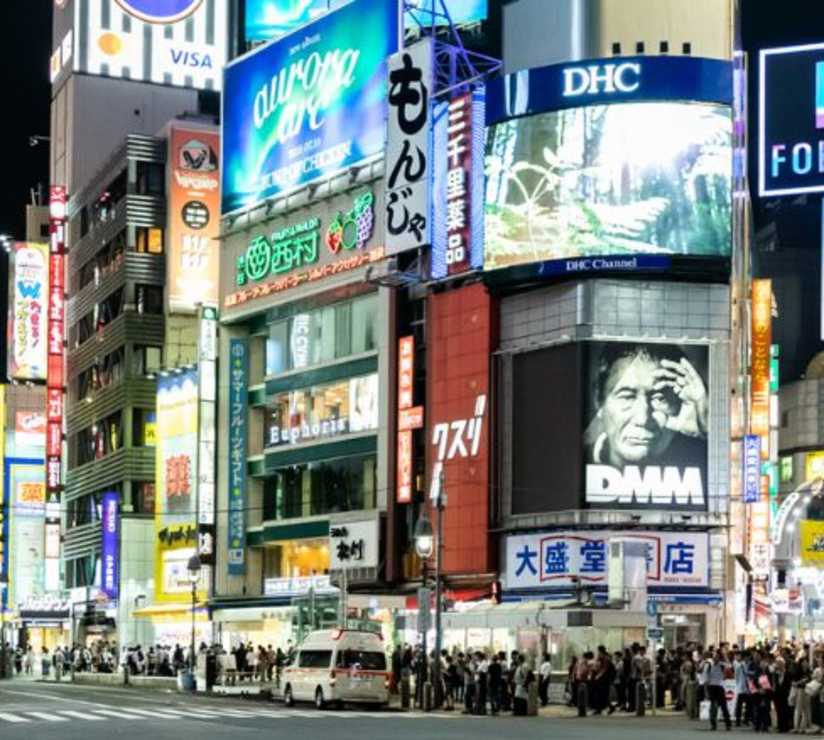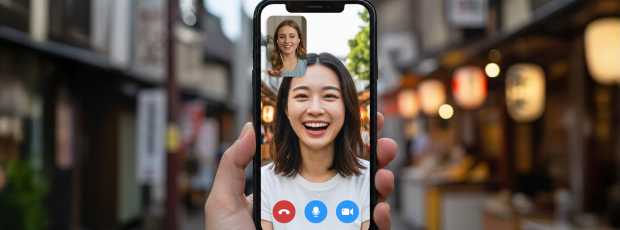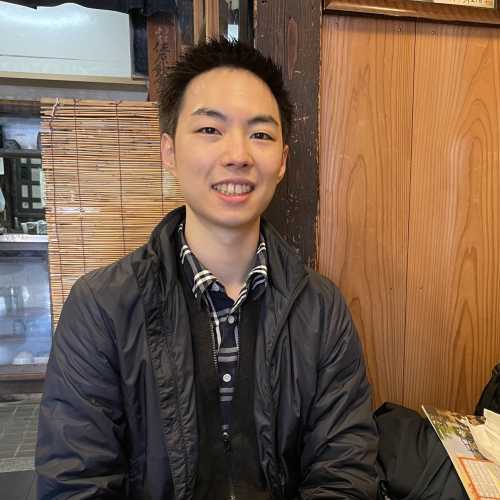We had a fantastic full-day tour with Nobu. He planned out a thoughtful itinerary for us, taking into account our interests. He was particularly knowledgeable about culture and history. We couldn't have had a better experience in Tokyo. Recommend 100%!Happy CU Customer, Tokyo, 2025
Timelapse panoramic view of Tokyo skyline
Table Of Contents
- Must-Sees: Iconic Attractions Worth Visiting
- Overrated Tokyo: Famous Places You Can Skip
- Authentic Tokyo Eats: Where Locals Actually Dine
- Tokyo's Unique Café Culture
- Interest-Based Things to Do
- Neighborhood Explorations
- Practical Tips for Visiting Tokyo
- Frequently Asked Questions
- Final Thoughts on Discovering the Best of Tokyo
After calling Tokyo home for 25 years, I've watched this amazing city evolve into something truly extraordinary. I've grown up here, but that doesn't mean I don't still find tucked-away spots or surprisingly good food I didn't previously know about.
This comprehensive guide covers all the essential things to do in Tokyo that locals actually recommend, plus insider knowledge you won't find in typical travel guides. You won't find tourist traps or overpriced experiences here. Instead, I'll share the real Tokyo - where to eat like a local, which neighborhoods pulse with genuine energy, and how to experience Japanese culture without the crowds.
Whether you're planning your first visit to Tokyo adventure or returning for more, these insights come from someone who's explored every corner of Japan's capital and found countless things that most visitors never experience.
Shibuya Scramble Crossing with thousands of people crossing.
Must-Sees: Iconic Attractions Worth Visiting
Shibuya Scramble Crossing
The world's busiest pedestrian crossing deserves its reputation, though mornings around 8 AM will give you the most intense Tokyo experience. Standing at Shibuya Station watching thousands of people cross simultaneously never gets old.
For the best view (but touristy), head to Shibuya Sky or the Starbucks overlooking the intersection.
But after 25 years in Tokyo, I have a better tip.
The 11th-floor observation area at Shibuya Hikarie offers the same incredible view with far fewer people. The floor-to-ceiling windows give you a perfect angle of the crossing. Since the building is mostly offices, few tourists ever go there. There’s even a small café, so you can sip a coffee and take in the organized chaos below in peace.
The energy here captures Tokyo perfectly - organized chaos that somehow works beautifully. Taking a moment to view Shibuya Scramble Crossing is, in my opinion, one of the most iconic things to do in Tokyo, offering both spectacle and insight into daily urban life.
See Tokyo Through Local Eyes With a Flexible Experience Made Just for You
Skip the script. Discover Tokyo your way with a local host who gets you. No groups, no rigid routes, just real experiences.
Entrance and Panoramic view of Tokyo from the top of the Skytree
Tokyo Skytree
This is the tallest tower in Japan, and it offers unparalleled views of central Tokyo and beyond. On clear days, you can spot Mount Fuji in the distance, making the admission fee worthwhile.
The observation deck boasts perspectives you can't get elsewhere in the city.
My annual ritual is watching the first snow from Tokyo Skytree's observation deck, and I recommend it to anyone who visits in winter.
Visit during sunset to watch Tokyo shift from daylight business hub to neon-lit wonderland.
The Tokyo Skytree also houses excellent restaurants and shops, though they're pricier than neighborhood alternatives.
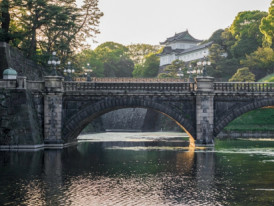
Imperial Palace in Tokyo
Imperial Palace
The Emperor's residence sits in the heart of Tokyo, surrounded by beautiful gardens and historical sites.
The East Gardens open to the public year-round, offering peaceful walks just minutes from Tokyo Station. Cherry blossoms here bloom magnificently in spring, creating one of the city's most photogenic spots.
You can join the free guided tours to learn about Japanese history and the palace's role in modern Japan. The Imperial Palace represents continuity in this rapidly changing metropolis and ranks among the most culturally significant attractions in Tokyo for understanding Japanese heritage.
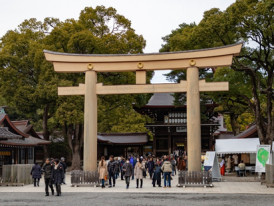
Torii Gate at Meiji Jingu Shrine
Meiji Shrine
Dedicated to Emperor Meiji and Empress Shoken, this shrine offers tranquility within bustling Shibuya. The path through towering trees feels like entering another world, despite being just a short walk from Harajuku Station. It's a beautiful and peaceful area. I run through the shrine grounds every Tuesday at 6 am - the priests always nod hello now.
Traditional Shinto weddings happen regularly here, and give glimpses into Japanese culture most tourists never see. The shrine grounds extend into Yoyogi Park, perfect for combining cultural exploration with outdoor relaxation.

View of the beautiful Yoyogi Park during the Sakura season
Yoyogi Park
Tokyo's largest park looks magical during cherry blossom season, when locals gather for hanami parties under blooming trees. Street performers, musicians, and artists work together to create a festival atmosphere year-round, especially on weekends.
Like I mentioned before, the park connects to Meiji Jingu Shrine and is walking distance from trendy shops in Harajuku. It's where Tokyo residents come to breathe, exercise, and socialize away from the city's intensity. Every sakura blossom season, I claim the same spot near a fountain for hanami with my friends. I'd recommend you come with your loved ones, too; it's a beautiful experience.
Is your Tokyo dream trip is finally here? Make every moment count with City Unscripted
We pair you with a Tokyo host who tailors every moment to your passions; no cookie-cutter plans, just an unforgettable experience that’s all about you

Tokyo Tower illuminated at night
Tokyo Tower
Inspired by the Eiffel Tower but painted bright orange and white, Tokyo Tower is an iconic symbol despite being shorter than Tokyo Skytree. The views here feel more intimate, showing the city's neighborhoods rather than treating them as abstract patterns.
Night illumination makes Tokyo Tower particularly striking, visible from many parts of Tokyo's center.
The surrounding area offers excellent restaurants and the nearby Zojoji Temple provides historical context.
Night illumination makes Tokyo Tower particularly striking.
Senso-Ji Temple main hall with traditional architecture and visitors.
Senso-Ji Temple
Tokyo's oldest temple sits in Asakusa, approached through Nakamise Shopping Street lined with traditional snacks and souvenirs.
The temple grounds buzz with activity as both tourists and locals come to pray and purchase good luck charms. You can visit too, and get some good fortune for your visit in Japan.
Asakusa Station connects easily to other parts of Tokyo, making Senso-Ji accessible for day trips.
The neighborhood retains old Tokyo charm that's increasingly rare in this modernizing city, and makes it a must-see if you like subtle aesthetic views.
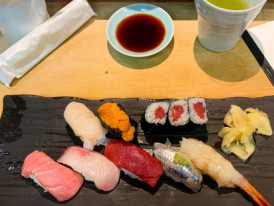
The freshest of sushi at Tsukiji Outer Market
Tsukiji Outer Market
Although the famous fish market moved to Toyosu, the Tsukiji Outer Market continues serving incredible street food and fresh ingredients. Local vendors have traded and made food here for generations, resulting in unique culinary experiences.
Early morning visits offer the best selection and smaller crowds. I have breakfast at the same tamagoyaki stall as often as I can. Even after all these years, the recipe hasn't changed!
The Tsukiji Fish Market legacy lives on through these dedicated food artisans who moved their businesses here decades ago.
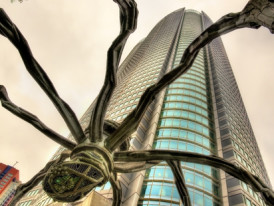
Spider Sculpture and Mori Tower in Roppongi Hills.jpg
Mori Art Museum
Located in Roppongi Hills, this museum features contemporary art exhibitions that change regularly.
The combination of international and Japanese artists gives you perspectives on modern culture you won't find elsewhere. That's not all. The museum's location offers stunning city views, especially from the observation deck.
teamLab Planets digital art installations
teamLab Planets
This digital art museum has experiences that draw you in, where visitors become part of the artwork.
If you're slightly into art and creativity, I highly recommend spending a few hours here.
Water rooms, mirror installations, and interactive projections blur the lines between observer and participant.
teamLab Planets Top Tip
Advanced booking is essential, as tickets sell out weeks ahead.Make Your Tokyo Trip Unforgettable
Planning a trip to Tokyo? Let a local host cut through the overwhelm, reveal the real city, and craft a day made just for you

Rikugien Garden in Autumn
Rikugien Garden
This traditional Japanese garden shows off seasonal beauty throughout the year, from cherry blossoms to autumn maple leaves. Every October, I walk through the garden to watch the leaves change.
The carefully designed landscapes offer perfect examples of Japanese aesthetic principles. My friends love the garden almost as much as I do, and I'm pretty sure you will too!
Evening illuminations during peak seasons create romantic atmospheres for couples and photography enthusiasts. The garden is less crowded than other famous gardens while maintaining exceptional beauty.
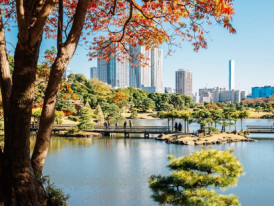
Hamarikyu Gardens with Tokyo Skyline
Hamarikyu Gardens
These gardens sit beside Tokyo Bay, with unique seawater ponds that change with the tides. The traditional teahouse in the center serves matcha while guests enjoy views of modern skyscrapers beyond. You can easily spend a few hours here, and not even notice the time go by. Interesting fact: Many years ago, the gardens served as duck hunting grounds for the Tokugawa family.
Ameya-Yokocho Market at Night
Ameya-Yokocho Market
One of my favorites, this bustling market near Ueno Station sells everything from vintage clothing to international foods. The narrow alleys pulse with energy as vendors call out prices and shoppers haggle good-naturedly. Local residents shop here for daily necessities while tourists hunt for unique souvenirs. The market survived World War II bombing and proudly continues serving the community.
Unassuming places like this market have a lot of history, so I recommend you see them with a local who knows all the stories!

Tiny bar in Golden Gai
Overrated Tokyo: Famous Places You Can Skip
Golden Gai
These tiny bar districts attract tourists seeking "real" Japanese nightlife, but locals rarely frequent them anymore. Prices are inflated, the atmosphere feels forced, and better bar-hopping experiences can be found throughout the city.
Mentioned in just about every guide, Golden Gai's cramped spaces and cover charges create more frustration than memorable experiences. I advise that you spend your evening exploring neighborhood izakayas where locals drink and socialize.
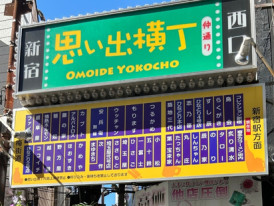
Entrance to Omoide Yokocho
Omoide Yokocho ("Memory Lane")
This narrow alley near Shinjuku Station, with its tiny yakitori stalls and red lanterns, resembles what foreign visitors imagine traditional Japanese drinking culture should be.
The problem is that most locals stopped coming here decades ago when prices started reflecting its tourist popularity rather than neighborhood authenticity. The cramped spaces that seat only four or five people create more claustrophobia than intimacy, and many stalls now charge cover fees that would make you wince.
Don't get me wrong - the atmosphere is undeniably photogenic, and the elderly proprietors still grill yakitori with practiced skill. But after 25 years of watching friends leave disappointed by overpriced beer and language barriers that make ordering frustrating, I'd rather point you toward the countless neighborhood izakayas throughout Tokyo where locals gather after work. These places offer the same grilled chicken and cold beer experience, but with genuine warmth, fair prices, and the kind of spontaneous conversations that make for real memories rather than Instagram posts.
Tourists in Takeshita Street in Harajuku
Takeshita Street
Harajuku's most famous street caters to teenage fashion and tourist curiosity rather than authentic Tokyo culture. I was there a couple of years ago, and the crowds moved slowly while vendors sold overpriced accessories and novelty foods. Didn't go back since.
Authentic Harajuku culture happens in the side streets and smaller shops where creative young people actually gather. In my humble opinion, Takeshita Street offers spectacle but little real substance.
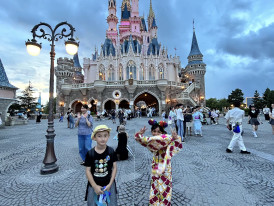
Tokyo Disneyland Castle
Tokyo Disneyland (if short on time)
While Disney Parks are well-executed, they consume entire days that could be spent experiencing uniquely Japanese attractions.
If your Tokyo itinerary is limited, prioritize experiences you can't find elsewhere.
Of course, theme park fans should definitely visit, but first-time Tokyo visitors might find more cultural value in traditional and modern Japanese attractions in other parts of the city.
See Tokyo Through Your Lens, Not a Script
Shop, eat, play, or stroll with a local host who tailors the day to you.
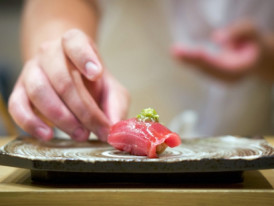
Fresh tuna sushi prepared by a sushi chef
Authentic Tokyo Eats: Where Locals Actually Dine
Best Sushi Away from Tsukiji Outer Market
Neighborhood sushi shops throughout Tokyo serve exceptional fish without tourist crowds or inflated prices. I can guarantee that places in residential areas often provide better value and more personal attention from experienced chefs.
Many excellent sushi restaurants are near local train stations, serving morning commuters and evening diners. Places like Takahashi, Sushisho Masa (my personal choice), and Kashigashira Sashimi Bar are perfect for delicious food and a feel for 'real life' in Tokyo.
Ever Wondered What Sushi Means to Tokyo?
Let a local take you beyond the menu, taste your way through Tokyo’s sushi culture, and uncover the stories behind every bite.
Local Ramen Shop in Tokyo
Top Ramen Shops That Locals Queue For
Although fancy restaurants are valued, real ramen culture happens in small shops where locals wait patiently for steaming bowls of perfectly balanced broth.
Every shop specializes in specific styles, from rich tonkotsu to light shio varieties.
Ramen Kamo, Negi, and Kikanbo are just a few of the amazing ramen shops you should definitely visit.
The best ramen shops often have no English signage and limited seating, but the quality speaks for itself. During lunch hours, follow the queues of office workers to find genuine local favorites.
You may have to order awkwardly or figure out what to order from the machine, but it will be worth the effort!
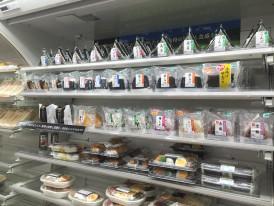
Onigiri rice balls at a Konbini in Japan. Photo by Amy_Jane via Flickr
Konbini Must-Tries and Unique Snacks
I've seen tourists be surprised by how Japanese convenience stores offer incredible variety and quality.
Hot foods, seasonal specials, and regional delicacies rotate regularly, creating constant discovery opportunities. And if there's one thing you have to get, it's onigiri!
These triangular rice balls are delicious and a must-have on any foodie (and even non-foodie!) list.
In addition, vending machines complement konbini offerings with hot and cold drinks, including seasonal flavors unavailable elsewhere. If you want to eat and drink like locals, this is how you do it.
These shops form the backbone of daily Tokyo life for residents and visitors alike.
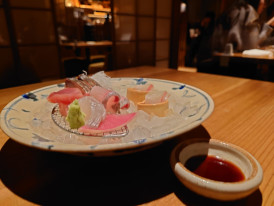
Fresh sashimi at a high-end local restaurant
High-End Eateries Beloved by Locals
Tokyo's upscale dining scene goes far beyond Michelin-starred establishments. Neighborhood restaurants earn devoted local followings through consistent excellence. These places balance sophistication with approachability. With that said, if you can get a table at one of Tokyo's Michelin-star restaurants, don't hesitate. I highly recommend Nakiryu in Otsuka or Ginza Hachigo. You'll never forget their meals!
Reservation systems vary, but persistence often pays off for special occasion dining. Local recommendations through hotel concierges or neighborhood contacts work better than online reviews, so ask around for the best restaurants. I'm certain you'll find some of the best eateries this way.
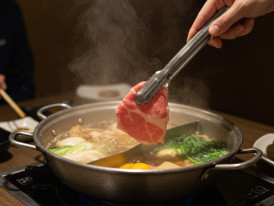
Shabu shabu hot pot
Shabu Shabu Restaurants for Japanese Hot Pot
This interactive dining style brings people together over bubbling broths and premium ingredients.
Quality shabu shabu restaurants provide excellent beef, fresh vegetables, and multiple dipping sauces.
All-you-can-eat options exist, but higher-end establishments focus on ingredient quality rather than quantity.
The social aspect makes shabu shabu perfect for group dining experiences. A restaurant I'll always recommend is Mo-Mo-Paradise. They've got the most amazing Shabu Shabu hotpot with high-quality meat and "all you can eat" deals.
Okonomiyaki being prepared on a hot griddle
Best Okonomiyaki Spots
This savory pancake dish varies by region, but Tokyo versions offer unique local ingredients and preparation styles. Small shops with hot griddles create intimate dining experiences where cooking is part of the entertainment. Many okonomiyaki restaurants let customers cook their own, providing ingredients and guidance. Shiraiwa Asakusa, a place I'll enthusiastically recommend to anyone willing to listen, serves delicious food and has multi-language menus.
Matsuri Street Food Stalls in Ueno Tokyo
Top Street Food Stalls Locals Love
Festival seasons bring incredible street food variety to neighborhoods throughout Tokyo, from yakitori to taiyaki fish-shaped pastries. These temporary stalls often serve specialties unavailable in permanent restaurants. Year-round street food concentrates around train stations and shopping districts, offering quick meals for busy Tokyo residents. Quality remains high despite casual presentation and reasonable prices.
Various izakaya across Tokyo
Izakayas and Why They Matter
These casual drinking establishments serve as community gathering places where neighbors, coworkers, and friends share food and conversation. Depending on the location and clientele, the atmosphere ranges from boisterous to intimate.
Many have no English menus, but pointing, smiling, and adventurous eating usually lead to memorable evenings.
Shokudo Todaka has been a favorite haunt of mine and friends for years, and if you get the chance to stop by, don't hesitate! You'll leave stuffed full of amazing food and wonderful memories.
Savor Tokyo’s Izakaya Scene Your Way
Hop between hidden bars and lively eateries with a local host who knows where the flavors, stories, and energy truly come alive.
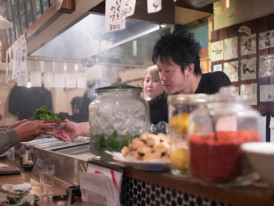
Small local restaurant in a Tokyo neighborhood
Hidden Local Restaurants in Meguro and Yanaka
These residential neighborhoods house restaurants that serve local communities rather than seeking tourist attention. Quality remains exceptional while prices stay reasonable compared to central Tokyo alternatives.
Exploring side streets in these areas will often lead to unexpected culinary discoveries.
Local residents are usually happy to provide recommendations when approached politely.
Stop by Robata No Sato, Hakata Hotaru Nakameguro, or Sushi Noike for unforgettable food! The riverside café where I wrote my first article about Tokyo is still my go-to workspace during cherry blossom season. I'm sure you'll find a favorite here as well.
Depachika food halls
Depachika for Gourmet Finds
Department store basement food halls offer incredible variety and quality, from fresh sushi to elaborate desserts. These spaces function as both grocery stores and prepared food destinations. The presentation and packaging in depachika reach artistic levels, making them perfect for gifts or special occasion meals. Prices reflect the premium quality and beautiful presentation. I love Shibuya Tokyu Foodshow and always spend longer than necessary at the sweets zone on the first floor when I go there.
Go Beyond the Guidebook With a Tokyo Experience Tailored to You
Whether it’s arcade-hopping in Akihabara or uncovering centuries of history, explore Tokyo your way with a local by your side.
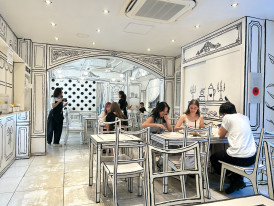
2D Cafe in Tokyo
Tokyo's Unique Café Culture
Trendy Coffee Shops in Daikanyama and Omotesando
These upscale neighborhoods house innovative coffee shops that treat brewing as serious craft. Café Façon Nakameguro and Café Streamline have great atmospheres that promise a memorable time for coffee lovers. One of my favorite spots here, GARDEN HOUSE CRAFTS DAIKANYAMA, has delicious croissants that will have you coming back for more. Third-wave coffee culture thrives in this area, with single-origin beans and precise preparation methods.
The vibe in these areas encourages lingering over perfectly crafted drinks while people-watching or working on laptops. And if you're big on aesthetics, the interior design often rivals the coffee quality for Instagram-worthy experiences.
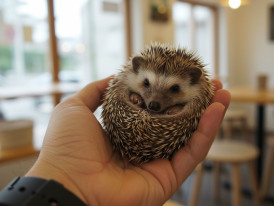
Hedgehog at hedgehog cafe
Animal-Themed Cafés
Cat cafés, owl cafés, and hedgehog cafés provide unique experiences for animal lovers unable to keep pets in small Tokyo apartments. These businesses balance entertainment with animal welfare considerations.
Booking ahead is recommended, especially for popular locations like Yadorigi Café and Akiba Fukurou Owl Café. I absolutely love both cat and owl cafés, but if you're looking for something a little different, there are also cafés with dogs, capybaras, piglets, and even hedgehogs!

Cinnamoroll Ice cream
Themed Cafés for Anime and Manga Fans
Tokyo's café scene also includes elaborate themed experiences celebrating popular culture, from Studio Ghibli to current anime series. These spaces immerse visitors in fictional worlds through detailed decorations and themed menus.
They're a must-visit if you enjoy anime and manga. Imagine drinking coffee with your favorite anime character's life-size cutout close by, or eating a meal based on the theme of your favorite manga. Yeah, it's as awesome as it sounds!
Even non-anime enthusiasts often enjoy the creativity and attention to detail in these unique dining experiences. For a cuteness overload, check out Pokemon Café, Cinnamoroll Café, and Shiro-Hige's Cream Puff Factory.
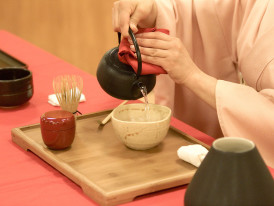
Japanese Tea Ceremony. Photo by Georges Seguin via Wikicommons
Traditional Tea Houses and Modern Tea Cafés
Classical Japanese tea ceremony experiences coexist with contemporary interpretations throughout Tokyo. Traditional tea ceremony lessons provide cultural education alongside matcha appreciation.
Modern tea cafés experiment with traditional flavors in contemporary presentations, appealing to younger generations while respecting cultural traditions. Nakajima Tea House has a Zen-inspired feel, and Hachiya Tea Café blends the ancient tradition of green tea with modern Japanese design.
I prefer the Zen-like atmospheres, but would still recommend any kind of traditional place, no matter what it looks like. It's just such a memorable experience.
Pouring chocolate sauce on a Kakigori (shaved ice)
Cafés Famous for Unique Desserts
Tokyo's dessert culture produces elaborate creations that prioritize both visual impact and flavor complexity. SebasTian, for example, is known for amazing matcha kakigori.
If you're a fan of matcha ice cream, Suzukien Asakusa is a must-visit. I've had it more times than I care to admit, and I'm sure you'll love it as much as I do! Seasonal ingredients influence menu rotations, keeping regular customers engaged year-round.
Social media popularity drives some trends, but underlying quality keeps these businesses successful beyond initial novelty. The craftsmanship involved is often just as good as that at fine-dining restaurants.
Tokyo Your Way, with Someone Who Truly Knows It
Skip the scripts. Discover a side of Tokyo most travelers miss with a local host who plans your experience around you.
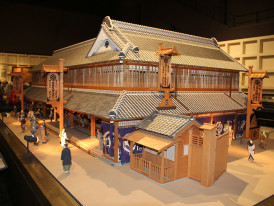
Edo Tokyo Museum Exhibit. Photo by Arashiyama via Wikicommons
Interest-Based Things to Do
Art and Culture
Edo Tokyo Museum
This museum chronicles Tokyo's transformation from an Edo-period fishing village to a modern metropolis. Interactive exhibits and detailed models help visitors understand the city's historical development and cultural evolution. The building itself reflects traditional Japanese architecture while housing modern exhibition techniques.
I know it sounds stuffy, but I've had so much fun here on my visits that I'd happily point tourists there any time. English-language materials and audio guides make complex historical information accessible to international visitors.
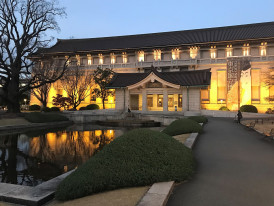
Main building of the Tokyo National Musuem. Photo by TPFUUT via Wikicommons
Tokyo National Museum
The National Museum houses treasures from across Asia, with particular strength in Japanese historical items and archaeological discoveries that illuminate the country's cultural evolution.
If you like seeing historical pieces, you should definitely stop here for a few hours.
Special exhibitions complement the permanent collection, often featuring items rarely displayed publicly. The museum grounds in Ueno Park provide peaceful settings for reflection after viewing cultural treasures, making this one of the most educational activities in Tokyo.

Nezu Museum Interior. Photo by Wpcpey via Wikicommons
Nezu Museum
This private museum specializes in pre-modern Japanese and East Asian art, housed in a building surrounded by traditional gardens. The combination of indoor galleries and outdoor landscapes creates comprehensive aesthetic experiences.
Also, tea ceremony demonstrations happen regularly, so you'll see how people used the items on display many, many years ago.

Ghibili Museum Cat Bus
Ghibli Museum
Dedicated to Studio Ghibli's animated films, this museum requires advance ticket purchases and attracts devoted fans worldwide.
The whimsical architecture and exclusive short films create magical experiences for visitors of all ages, even 28-year-old locals who visit the museum way too often. Located in suburban Mitaka, the museum can give you respite from central Tokyo's intensity while celebrating Japan's most beloved animation studio. The surrounding Inokashira Park is a big bonus too.

Kabuki actor. Photo by lensonjapan via Wikicommons
Kabuki Theater
Traditional Japanese theater can be enjoyed at venues throughout Tokyo, with the Kabuki-za in Ginza being the most famous. To be honest, my first kabuki experience was completely confusing, but now I buy my tickets ahead of time on a regular basis.
English-language audio guides help international audiences follow complex plots and appreciate performance techniques. Single-act tickets make kabuki accessible without committing to full-day performances. The elaborate costumes, makeup, and stagecraft provide spectacular visual experiences even when language barriers exist.
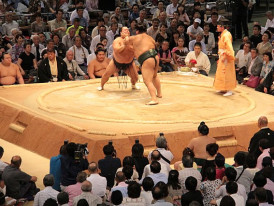
Sumo tournament. Photo by Cesar I. Martins via Wikicommons
Sumo Wrestling Tournaments
Professional sumo tournaments happen at Tokyo Dome and Ryogoku Kokugikan several times annually, offering glimpses into Japan's national sport. If you're planning on attending tournaments, advance booking ensures better seats. However, if you're lucky, same-day tickets sometimes become available.
Sumo wrestlers train at stables throughout Tokyo, and some allow visitors to watch morning practice sessions. I know that sumo wrestlers look scary, but they're actually nice people when you get to know them. I'd recommend you try to hang out with these athletes if you can get the chance.
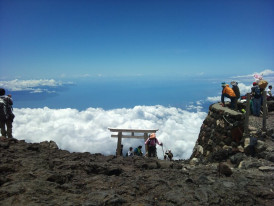
Mt Fuji Summit. Photo by YAMAMOTO Kenta via Wikicommons
Outdoor Enthusiasts
Hiking Around Mount Fuji
Day trips from Tokyo reach Mt Fuji's base, offering hiking trails suitable for various fitness levels.
If you want to take beautiful photos, I'd really recommend you take a hike!
Some of the best snaps I've ever taken were after a hike around this famous mountain, despite being unable to climb because of the weather.
Public transportation connects Tokyo to Fuji area efficiently, making car rentals unnecessary. An international driving permit would be required for those preferring private transportation, but trains and buses serve the area well.
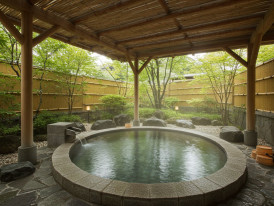
Onsen hot springs near Tokyo
Hot Springs Near City Center
You'll easily find traditional onsen experiences within Tokyo's boundaries and nearby areas. Here, you'll enjoy relaxation after busy sightseeing days. If I had to choose only one thing you absolutely have to do while in Tokyo, this is it. Spa LaQua and Hisamatsuyu are amazing, but you'll find many great options if you 'shop around' a bit.
These natural hot springs adhere to traditional bathing customs while offering modern amenities. They're unique and amazing, and there really is no reason not to try a hot spring.
Day trip hot springs combine easily with other outdoor activities like hiking or temple visits. The therapeutic benefits and cultural significance make onsen visits essential.
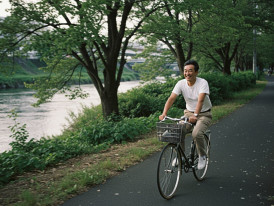
Cycling along the river
Cycling Along Tama River
Cyclists, rejoice! The Tama River cycling path extends from central Tokyo into suburban areas, offering car-free exercise and sightseeing opportunities. You'll find all the equipment you'll need in the many bike rental shops near the river. In fact, you'll even get route suggestions for your skill level.
The riverside path shows off different sides of Tokyo, from urban development to preserved natural areas. My friends have dragged me along to cycle here, and although my body wasn't happy, my mind was more than pleased with the views. Also, cherry blossoms along the river create spectacular spring cycling experiences.
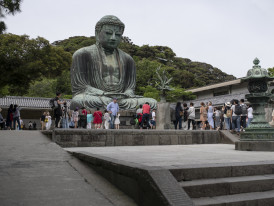
Kamakura Giant Buddha
Day Trips to Kamakura or Hakone
When Tokyo starts feeling too much (and trust me, it happens even after 25 years), I escape to either Kamakura or Hakone for the day.
Kamakura is my go-to when I need some spiritual centering. There's something magical about standing before that massive Great Buddha statue and realizing how small your daily worries really are. The ancient temples there have this incredible peaceful energy that just washes over you.
Hakone, on the other hand, is pure indulgence. Soaking in natural hot springs while Mount Fuji looms in the distance feels like stepping into a postcard.
Both places are ridiculously easy to reach by train from Tokyo. There are no rental car headaches or navigation stress; just hop on the train with a good book, and you'll be there in about an hour. These little adventures always remind me why I love Japan. Tokyo is incredible, but it's even more amazing when you understand it's part of this beautiful, layered country with thousands of years of history just a train ride away.
Escape to Hakone, Your Way
Ride the Romancecar, soak in onsen, and take in Mount Fuji views with a local host who makes every moment yours to enjoy.
Vintage shops and cool people in Shimokitazawa
Shopping Experiences
Vintage Stores in Shimokitazawa
This trendy neighborhood concentrates Tokyo's best vintage fashion and secondhand shops into walkable streets lined with independent retailers. The bohemian atmosphere attracts creative young people and fashion-conscious visitors.
Prices remain reasonable compared to department stores, with options like New York Joe Exchange, Tanpopo House Shimokitazawa, and Treasure Factory Style offering incredible deals.
I found my lucky interview jacket at one of the vintage stores here in 2005 and wore it to every job interview since!
The area also features live music venues and alternative cafés that complement the shopping experience.
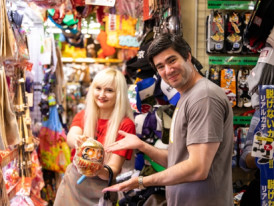
Shopping Experience at Donki
Don Quijote for Unique Japanese Shopping
You really have to experience the wonderful chaos that is Don Quijote - locals call it "Donki."
Picture wandering through aisles packed floor-to-ceiling with an impossible mix of items: Hello Kitty merchandise beside samurai replicas, luxury cosmetics next to instant ramen, costumes sharing space with electronics.
The layout defies all logic, but that's precisely what makes it so entertaining. After shopping at Donki for so many years, I still find something completely unexpected on every visit. It's like an adult treasure hunt where you never know what you'll stumble upon.
The fun is in the browsing itself, letting serendipity guide you through the maze-like floors.
And honestly, where else can you find unique souvenirs for everyone back home while picking up daily essentials at 2 AM? The 24-hour locations have saved me countless times when I needed last-minute gifts or forgot something important.
Shopping at Daiso
Daiso and Seria for Incredible Finds
These 100-yen ($0.66 USD) shops are all about remarkable value and variety, from household goods to office supplies and seasonal decorations. The quality often exceeds expectations, given the low prices.
Visiting these stores will give you some insight into Japanese design sensibilities and daily life priorities.
Many items are uniquely Japanese, making them perfect, affordable souvenirs for friends and family.
Over the years, I've spent many hours and a lot of money here, buying amazing items I don't think I would have found elsewhere.
Loft in Shibuya
Tokyu Hands and Loft for Creative Goods
Recently rebranded to just Hands, Tokyu Hands is well-known in Japan, and locals still call it Tokyu Hands despite the name change. These two stores have become essential stops for me.
Tokyu Hands and Loft are multi-story wonderlands that perfectly show off Japanese ingenuity.
Think eight floors of beautifully designed stationery, innovative home solutions, and tools you never realized you needed.
What I love most about these places is how they showcase Japanese attention to detail in everyday objects. You'll find everything from precision craft supplies to clever organizational systems that actually work. Also, the staff is wonderfully patient and helpful, often demonstrating products even when language barriers exist. They genuinely want you to know why each item is special.
I always plan extra time when visiting because the selection is genuinely inspiring: beautiful notebooks that make you want to write, kitchen gadgets that solve problems you didn't know you had, and artistic supplies that spark creativity.
It's where locals go when they want something that will last and perform beautifully for years to come.
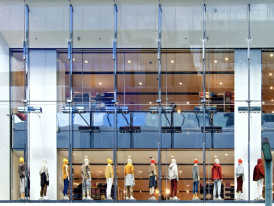
Shop Window of UNIQLO Ginza by Toshihiro Gamo via Flickr
Uniqlo and Muji for Great Deals
These Japanese retailers offer high-quality, minimalist clothing and home goods at reasonable prices.
Their success internationally started in Tokyo, where flagship stores showcase the complete product range. The emphasis on function, quality, and simple design reflects Japanese aesthetic values.
Both brands provide practical souvenirs that continue providing value long after Tokyo visits end.
Front of Yodobashi in Kichijoji
Yodobashi Camera for Electronics
I have to admit, even after many years, I still get excited walking into Yodobashi Camera.
These aren't just electronics stores—they're tech wonderlands that showcase everything Japan does brilliantly with consumer electronics.
What really impresses me is how knowledgeable the staff are. They'll patiently explain technical specifications and help you compare models, even demonstrating features so you can make informed decisions.
The tax-free shopping for international visitors is fantastic, but honestly, I think the real value is the experience itself. Where else can you spend hours testing professional cameras, trying out the newest headphones, and playing with gadgets that won't hit international markets for months?
It's like getting a preview of the future, and the competitive pricing means you're often getting better deals than you'd find anywhere else.
Omotesando Hills Luxury Shopping
High-End Shopping in Ginza, Aoyama, and Omotesando
These upscale districts house luxury boutiques, department stores, and flagship retail experiences.
Window shopping alone provides entertainment, while the architecture and design create sophisticated urban environments.
The areas offer insights into Tokyo's wealth and consumer sophistication. Stop by stores like Mitsukoshi Ginza and LOVELESS AOYAMA, as well as well-known options such as Louis Vuitton, Chanel, and Dior.
Even without purchasing, experiencing these districts helps understand Tokyo's position in global fashion and luxury markets.
Shop, Dine, and Discover Ginza Your Way
From luxury boutiques to hidden spots, explore Tokyo’s glitziest district with a local host who knows every stylish corner.
Akihabara Electronic Town
Akihabara for Anime, Manga, and Electronics
Known worldwide as Tokyo's electronics and otaku culture center, Akihabara offers everything from vintage video games to the latest manga releases. Multi-story shops specialize in specific niches within these broad categories.
The area attracts international visitors seeking Japanese pop culture items unavailable elsewhere.
Of course, even locals come here often, including yours truly. My friends and I spend hours here at a time, so I recommend you clear your schedule before stopping by. Even non-fans often enjoy the colorful displays and enthusiastic customer service typical of these specialized retailers.
Level Up Your Tokyo Adventure in Akihabara
Explore anime, gaming, and pop culture hotspots with a local host who knows every hidden shop, themed café, and arcade gem.

Japanese fabrics shop
Nippori Fabric Town
I stumbled upon Nippori Fabric Town completely by accident years ago, and it's become one of my favorite discoveries to share with visitors who appreciate craftsmanship.
This entire district is dedicated to fabrics and sewing supplies, with shop after shop displaying the most beautiful textiles you can imagine - from traditional Japanese patterns to cutting-edge materials used by Tokyo's fashion designers. The variety is absolutely incredible - you'll find everything from delicate kimono fabrics to industrial-strength materials, often at prices that would surprise you given the quality.
Kappabashi Street Shops in Tokyo
Kappabashi for Kitchenware
Here you'll find everything from razor-sharp knives that cost more than my monthly train pass to those incredibly realistic plastic food displays that grace restaurant windows throughout Japan.
What I love about wandering through these shops is watching professional chefs examine knives with the same reverence that art collectors show toward paintings.
The craftsmanship is extraordinary—these aren't just tools; they're instruments that reflect generations of culinary tradition. Even if you're not a serious cook, you can't help but appreciate the precision and quality that go into each piece.

Cherry Blossoms in Nakameguro. Photo by KimonBerlin via Wikicommons
Nakameguro: Cherry Blossom Views and Riverside Cafés
The Meguro River is Tokyo's most romantic spot during cherry blossom season, when pink petals create tunnels over the water. Year-round, the riverside walk offers peaceful escapes with trendy cafés and boutiques.
The neighborhood attracts young professionals and creative types, creating a sophisticated but relaxed atmosphere. Independent shops and restaurants are alternatives to chain stores found in busier districts, and they come highly recommended.
Streets of Koenji
Koenji: Vintage Shopping and Indie Music Venues
Koenji holds a special place in my heart as Tokyo's creative soul. It's where the city's artistic energy feels most genuine and unfiltered. Walking these streets, you'll encounter vintage shops run by passionate collectors who can tell you the story behind every piece, and intimate live music venues where you might find your new favorite band performing to an audience of twenty people.
What draws me back to Koenji repeatedly is how it attracts Tokyo's creative community - musicians, artists, and young professionals who value authenticity over trends. The vintage clothing stores aren't just selling old clothes; they're curating pieces with real character and history.
Want to Discover Koenji with a Local?
Skip the guesswork and wander with someone who knows the best spots, unexpected gems, cool streets, and good vibes guaranteed.

Narrow alley in Kichijoji
Kichijoji: Vibrant Café Culture and Inokashira Park
Consistently ranked among Tokyo residents' favorite neighborhoods, Kichijoji combines urban conveniences with natural beauty.
Inokashira Park provides green space for relaxation, while the surrounding streets offer excellent shopping and dining. It is at this park that I learned to appreciate truly Japanese aesthetics.
I've spent entire afternoons here over the years. The neighborhood's popularity with locals rather than tourists creates warm and memorable Tokyo experiences. The balance of nature, culture, and urban amenities explains why many Tokyo residents choose to live here.
Yanaka Ginza
Yanaka: Old-Town Charm and Traditional Craft Stores
This historic neighborhood survived World War II bombing, preserving traditional Tokyo architecture and community atmosphere. Small shops sell handmade crafts while temples and shrines maintain spiritual traditions.
Walking these streets feels like time travel to earlier eras of Tokyo's past. The area offers respite from modern Tokyo's intensity while showcasing cultural continuity and traditional craftsmanship. The pottery shop on the main street is where I bought my first piece of Japanese ceramics. I still use those bowls daily, and if you buy anything here, it'll last you a lifetime too.

Alley in Sangejaya
Sangenjaya: Hipster Cafés and Local Nightlife
Known locally as "Sancha," this residential area has developed a reputation for innovative cafés, craft bars, and independent restaurants. The neighborhood attracts creative professionals seeking alternatives to central Tokyo's mainstream offerings.
I find that the intimate scale encourages walking and discovery, with new businesses opening regularly.
Local nightlife focuses on quality over quantity, creating memorable experiences for those willing to explore. There's a craft bar called Craft Beer Shop Sangenjaya Sanity where I became friends with other long-term foreign residents. It's a great spot for connecting with like-minded people.
Experience Sangenjaya Like a Local
From trendy cafés to lively bars, explore Tokyo’s hipster hub with a host who knows the best bites, views, and creative corners.
Omotesando Ura Streets
Omotesando Ura: Boutique Shopping and Trendy Cafés
The back streets behind famous Omotesando Avenue hide sophisticated shopping and dining experiences away from tourist crowds. These quiet streets feature designer boutiques and innovative restaurants.
The area showcases Tokyo's fashion and design leadership while maintaining a human scale and walkable streets.Window shopping and café hopping are perfect afternoon activities for style-conscious visitors.
Ueno streets at night
Ueno: Parks, Museums, and Street Food
Ueno Park concentrates multiple museums, a zoo, and seasonal attractions in one walkable area. The Tokyo National Museum, Tokyo Metropolitan Art Museum, the Samurai Museum, science museums, and Ueno Zoo create full-day cultural experiences that explore both traditional and contemporary culture.
I visit the ceramic collection every start of the new year. It's become my personal tradition, and I highly recommend you visit. It's a lot more interesting than it sounds! Street food vendors and casual restaurants serve museum visitors and park guests.
The area balances high culture with popular entertainment, making it accessible to diverse interests and age groups while offering some of the most enriching things to do in Tokyo.
Vibrant Shinjuku at Night
Shinjuku: Vibrant Nightlife and Shopping
Tokyo's busiest district pulses with energy 24 hours a day, from massive department stores to tiny bars and restaurants. Shinjuku Station handles millions of passengers daily, making it Tokyo's transportation hub. I finally found the fastest route to platform 15—it only took me 23 years to figure out!
The area offers everything from high-end shopping to budget entertainment, with vertical development creating multiple layers of urban experiences. Both Shinjuku Gyoen National Garden provides green relief from the urban intensity.

Shibuya crossing
Shibuya: Fashion Hub and City Energy
Beyond the famous crossing, Shibuya offers cutting-edge fashion, innovative restaurants, and energetic nightlife. The area attracts young people from across Tokyo, creating dynamic street scenes and trend-setting businesses.
Shibuya Sky provides aerial views of the district's organized chaos, while ground-level exploration rewards visitors with constant surprises. The neighborhood embodies Tokyo's youth culture and commercial energy.
Ikebukuro day and night
Ikebukuro: Otaku Culture and Entertainment
This major transportation hub has become a center for anime, manga, and gaming culture. Massive electronics stores and themed cafés cater to otaku interests while mainstream shopping and dining serve diverse populations.
The area offers alternatives to Akihabara for pop culture shopping, often with better prices and less crowded conditions.
More than 26,274 5-star reviews and counting
26,274+ 5-Star Reviews and Counting
Trusted and recommended by travelers worldwide.

Suica Card. Photo by タチヤマカムイ via Wikicommons
Practical Tips for Visiting Tokyo
Transport Tips: Using Tokyo Station and Train Systems
Tokyo Station is the city's main railway hub, connecting local trains with bullet trains to other Japanese cities. The massive complex can confuse first-time visitors, but clear signage in multiple languages helps with basic navigation.
For travelers arriving from overseas, connections from Narita International Airport to Tokyo Station via the Narita Express train provide efficient access to the city center.
I'd advise that you purchase IC cards like Suica or Pasmo for convenient train and subway travel throughout Tokyo.
These rechargeable cards work on all public transportation, as well as in many vending machines and convenience stores. They are essential for exploring the countless things to do in Tokyo.
Shinjuku Station handles more passengers than any other station worldwide, so please allow extra time for transfers here. If you're stressed about getting lost or missing your train, you can download transportation apps like Google Maps or Hyperdia to plan routes and check schedules in real-time.
Payment Tips: Cash Requirements and Credit Card Acceptance
Japan remains largely cash-based despite technological advancement, so carry sufficient yen for daily expenses. Many restaurants, shops, and transportation systems only accept cash payments.
But with that said, vending machines throughout Tokyo accept both coins and bills, providing convenient ways to use small denominations.
International ATMs at convenience stores and post offices allow cash withdrawals using foreign cards.
Credit card acceptance has improved in recent years, especially at hotels, department stores, and tourist-oriented businesses. However, always carry cash as a backup for smaller establishments and traditional restaurants.
Language Tips: English Proficiency Among Locals
English proficiency varies widely among Tokyo residents, with younger people and service industry workers generally more comfortable with basic English.
Hotel staff and major tourist attractions usually provide English assistance.
Download translation apps like Google Translate for real-time assistance with menus, signs, and basic conversations.
Many restaurants display plastic food samples, making ordering possible through pointing and gesturing.
Learn basic Japanese phrases like "arigatou gozaimasu" (thank you) and "sumimasen" (excuse me) to show respect and improve interactions with locals.
One point I want to emphasize is that politeness is highly valued, and effort to use Japanese is always appreciated.
Frequently Asked Questions
Is 3 Days in Tokyo Enough?
My honest answer is that three days will give you a wonderful taste of Tokyo. But it's really just scratching the surface of what this incredible city offers.
Think of it as a carefully curated preview rather than a comprehensive experience - and that's perfectly fine for a first visit.
My advice after watching countless friends on short Tokyo trips is to resist the urge to pack everything in. Choose one or two neighborhoods per day and really immerse yourself in them.
You'll have much richer experiences wandering through Shibuya and truly absorbing its energy than rushing between five different districts just to check them off a list.
Consider what genuinely interests you when planning. Art enthusiasts might spend an entire day museum-hopping in Ueno, while food lovers could dedicate a whole day to exploring Tsukiji and the surrounding food scene.
Both approaches are equally rewarding - it's about depth over breadth.
Can You Wear Jeans in Tokyo?
This is such a practical question, and I'm happy to put your mind at ease - absolutely yes, you can wear jeans throughout Tokyo!
I see locals in well-fitted jeans everywhere, from Shibuya crossing to neighborhood cafés. The key difference I've noticed over the years is that Tokyo fashion leans toward looking polished and put-together, even in casual clothes.
A clean, well-fitted pair of jeans with a nice top will serve you perfectly for most experiences. You'll fit right in and feel comfortable exploring everything from bustling markets to trendy neighborhoods.
My general rule is simple: when in doubt, dress slightly nicer than you think you need to.
It's never wrong to show a little extra consideration for the places you're visiting and the people you'll meet. Plus, you'll feel more confident exploring when you know you're dressed appropriately for any situation.
What Are the Top 10 Things to Do in Japan?
While Japan has incredible experiences from Kyoto's temples to Osaka's food scene, Tokyo alone can take credit for several of the country's absolute must-do activities.
I always tell visitors that you can experience Japan's full spectrum right here - from the spiritual tranquility of ancient Senso-ji Temple to the mind-bending digital art at teamLab, where technology feels like pure magic.
The wonderful thing about Tokyo is how it adapts to your interests.
Anime enthusiasts find paradise in Akihabara's otaku culture, fashion lovers lose themselves in Ginza's luxury boutiques, and Japanese cuisine enthusiasts can spend hours exploring everything from street vendors to Michelin-starred restaurants.
Is Tokyo Friendly to American Tourists?
Absolutely. Over the years, I've watched the city become increasingly international, with English signage throughout major attractions and transportation hubs making navigation super easy.
What consistently impresses me is the genuine patience Tokyo residents show toward visitors who are clearly trying to figure things out.
Yes, cultural differences exist, but I've witnessed countless moments where locals go out of their way to help confused tourists - sometimes even walking them to their destination rather than just pointing the way.
From a safety perspective, Tokyo consistently ranks among the world's safest major cities.
I regularly see lost wallets returned intact. Violent crime against tourists is genuinely rare, even in areas like the red light district.
If you're still wary, don't forget travel insurance and meet with a local for a friendly start to visiting Japan.
What's the Coolest Thing About Tokyo?
For me, it's that after 25 years of shopping (yes, I started very young!), the convenience store clerk near my apartment still sometimes surprises me with seasonal items I've never seen.
Tokyo's ability to blend ultra-modern technology with ancient traditions creates unique urban experiences found nowhere else.
Walking from a 1,000-year-old temple to a robot restaurant within minutes captures the city's special character.
The attention to detail in everything from convenience store food to public transportation reflects cultural values that prioritize quality and customer service.
This commitment to excellence appears in both traditional crafts and cutting-edge technology.
Tokyo's 24-hour energy means there's always something happening, whether it's early morning fish auctions, late-night ramen shops, or all-night convenience stores.
The city never truly sleeps, providing endless exploration opportunities.
What to Do in Tokyo for First Timers?
After watching dozens of friends experience Tokyo for the first time, I've learned that the magic happens when you embrace the city's incredible contrasts.
Plan to visit both the serene grounds of Meiji Shrine, where you can experience Japan's spiritual traditions, and the futuristic observation decks of Tokyo Skytree, where the city spreads out below you like a living circuit board.
This combination isn't just about checking boxes - it helps you understand how Tokyo beautifully blends together thousands of years of history with cutting-edge innovation.
My strongest advice for first-time visitors is to make food exploration a central part of your experience. Yes, splurge on that once-in-a-lifetime sushi experience where each piece is crafted like art, but also grab onigiri from a convenience store at 2 AM and marvel at how something so simple can be so perfect.
Try the ramen shop with no English menu where you point at pictures, sample wagyu beef that melts on your tongue, and discover that Japanese convenience store fried chicken is somehow better than most restaurant versions back home.
Transportation adventures using Tokyo's extensive train system provide cultural immersion while moving between attractions efficiently.
Rush hour experiences, while crowded, offer insights into daily Tokyo life that many tourists miss.
Even navigating the famous Shibuya Scramble Crossing during peak hours is one of the memorable and best places to visit in Tokyo that connects visitors to the city's pulse.
Final Thoughts on Discovering the Best of Tokyo
After 25 years in this incredible city, I'm still finding new things to do in Tokyo that surprise and delight me. From early morning runs past Tokyo Tower to late-night explorations of neighborhood izakayas, this amazing city rewards curiosity and openness to new experiences.
The sheer variety of things to do in Tokyo ensures that even long-term residents continue making discoveries.
The real magic happens when you move beyond the obvious tourist attractions and start experiencing Tokyo like a local resident.
Whether you're savoring delicious Japanese food in a tiny restaurant near Tokyo Station, watching pretty blossoms bloom in Ueno Park, or getting lost in the maze-like streets around central Tokyo, every moment offers opportunities for exploration and adds to the endless list of meaningful things to do in Tokyo.
Tokyo changes constantly, with new restaurants, shops, and attractions opening regularly while traditional culture continues thriving alongside modern innovations. This dynamic balance keeps the city fresh even for long-term residents like myself.
Don't try to see everything in one visit. Instead, choose a few neighborhoods to explore deeply, allowing time for spontaneous discoveries and unhurried conversations with locals.
The city shows its secrets gradually to those who take time to look beyond the surface.
For visitors wanting deeper cultural immersion and insider access to experiences most tourists never find, consider exploring Tokyo experiences or booking private tours in Tokyo that connect you with local guides who share my passion for this extraordinary city.
Remember that Tokyo rewards respect, patience, and genuine curiosity about Japanese culture.
Approach each experience with openness, and you'll leave with memories and understanding that extend far beyond typical tourist visits. This huge city has space for everyone willing to explore with respect and enthusiasm.
Tokyo Your Way, Not the Tour Way
SEE TOKYO EXPERIENCESNot a Tour. Your Tokyo Story, Unscripted
Explore the city with a local who gets you. No fixed routes. No tourist fluff. Just a day shaped around what you want to see and do.
Chat to Someone Who Knows Tokyo Inside Out
Got questions? Get honest, friendly answers from a local who’ll help you plan a day that feels like you, not a cookie-cutter tour.
